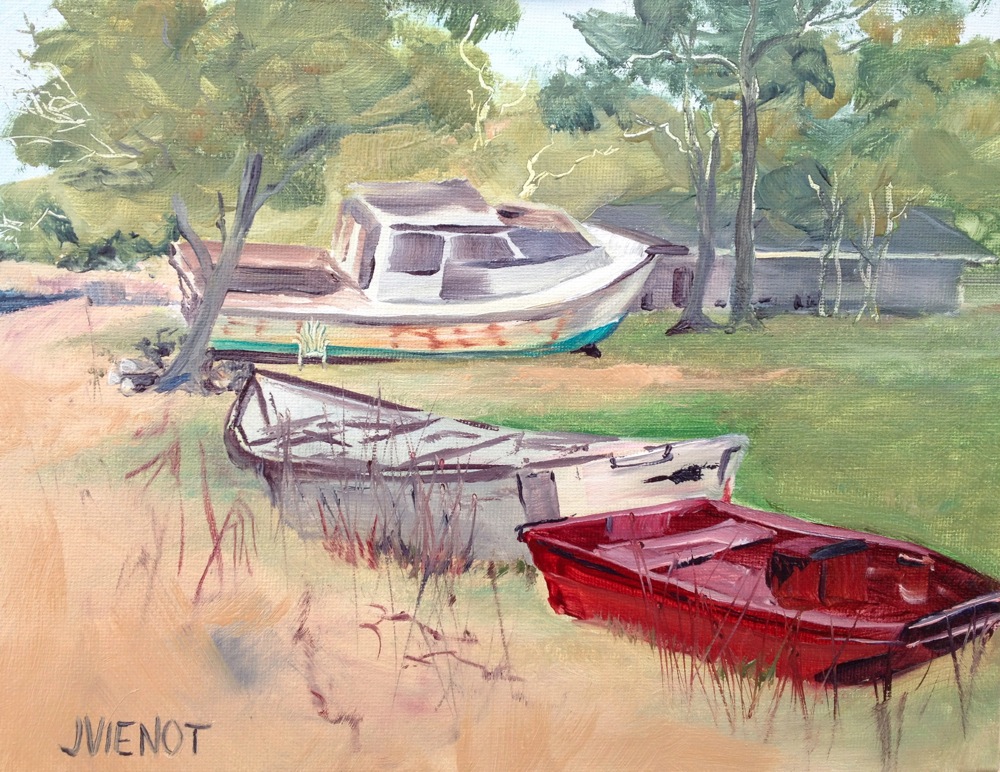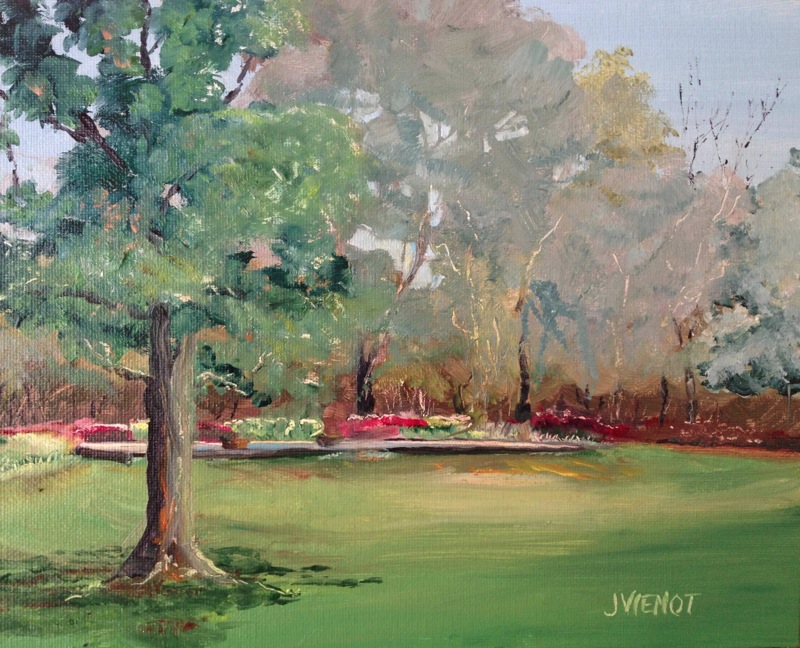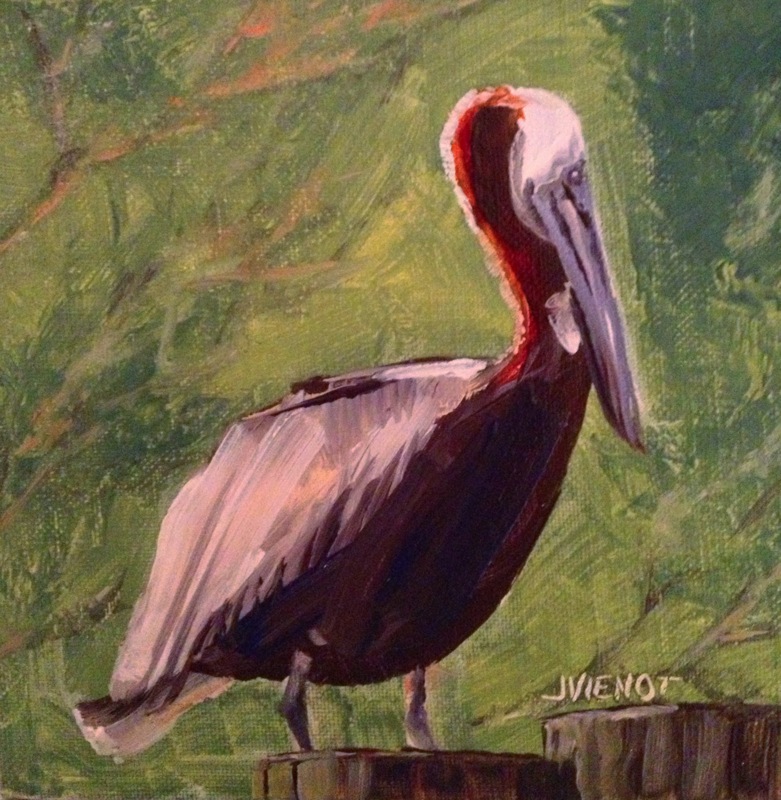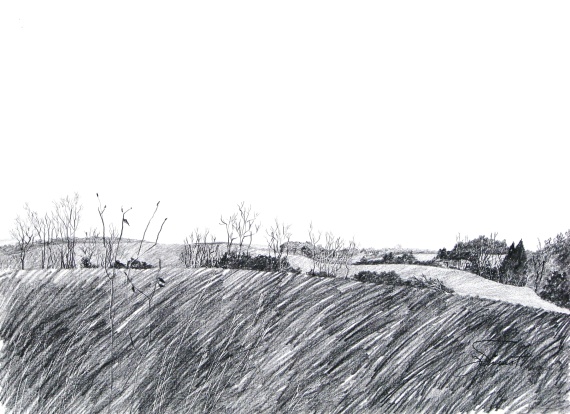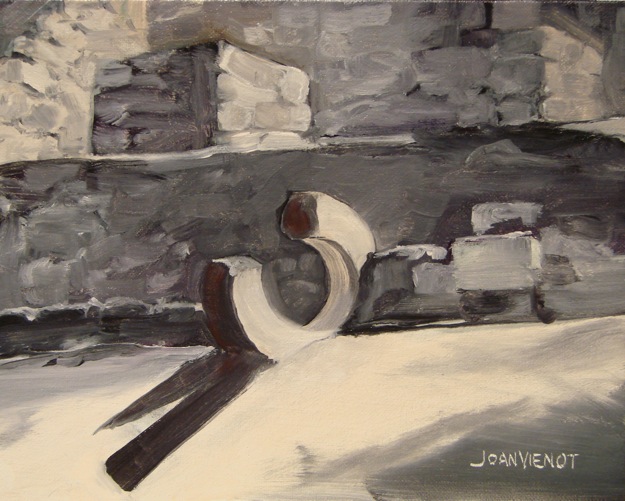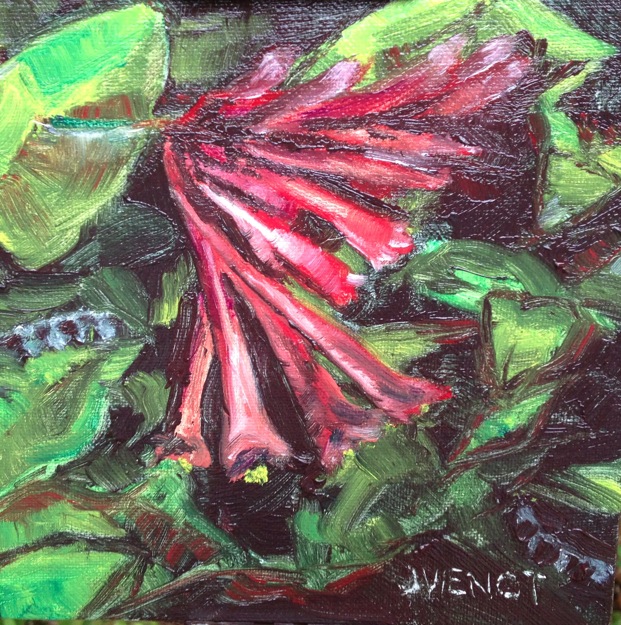
 I have hired Saramae Dalferes to help me take the fast track in my transition to becoming a full-time artist at least two days a week by the end of the year. Saramaeis a Nationally Certified Counselor, Mentor, and Personal Coach. I told Saramae this week that I was going to set up a challenge for myself at the weekly plein air outing of the Emerald Coast Plein Air Painters. My plan was to paint using only one single brush for all parts of the painting, so that I would paint faster and more loosely.
I have hired Saramae Dalferes to help me take the fast track in my transition to becoming a full-time artist at least two days a week by the end of the year. Saramaeis a Nationally Certified Counselor, Mentor, and Personal Coach. I told Saramae this week that I was going to set up a challenge for myself at the weekly plein air outing of the Emerald Coast Plein Air Painters. My plan was to paint using only one single brush for all parts of the painting, so that I would paint faster and more loosely.
Once you tell your coach that you are going to do something, there is no going back. So today at the plein air outing, I chose a #8 bright, a brush which is approximately 1/2″ wide, with stiff bristles that are about 5/8″ long.
Our location was an exquisite house with beautiful gardens. After walking the grounds, I opted to paint the flower of a coral bean plant that I found in an ungroomed part of the backyard. I choose a smaller canvas panel, 6″ x 6″, unsure whether I would just be making a huge mess by using only one size brush. To my surprise, I finished the painting in just one hour. I had time to paint another!
For my second painting, I chose the house itself, which had a turret and a roofline with many planes. I struggled with the perspective of the structure. But while I was painting, I found I was less concerned with accurate perspective, and more concerned with the general “feel” of the place. I was moderately successful, especially considering that I was still using only the #8 Bright. The roof angle is a little confusing in my painting, and I did not correct it when I noticed, preferring to focus on color and light and shadow.
 At the critique afterwards, Sue Carol Knight Woodley mentioned that towards the end of her painting, she was thinking about the elements and principles of art, particularly the elements of line, form color, and texture. I’ve focussed on the elements (7 in my book: line, shape, size, position, color, texture, density) and principles of design (balance, rhythm, and harmony) when figure drawing, but I confess, much of my plein air effort is simply trying to figure out what colors to mix together to get the color I am seeing, and then trying to figure out what shapes to make with that color.
At the critique afterwards, Sue Carol Knight Woodley mentioned that towards the end of her painting, she was thinking about the elements and principles of art, particularly the elements of line, form color, and texture. I’ve focussed on the elements (7 in my book: line, shape, size, position, color, texture, density) and principles of design (balance, rhythm, and harmony) when figure drawing, but I confess, much of my plein air effort is simply trying to figure out what colors to mix together to get the color I am seeing, and then trying to figure out what shapes to make with that color.
While painting the house, I came to have an even greater appreciation for the skill of artists such as Andrew Wyeth and Edward Hopper. I regret that the photograph at right does not show the dark blue-green of the roof shingles. The more I paint, the more I am noticing that the camera rarely captures color accurately.
Most of my paintings and images are available for purchase. Contact me if you are interested. — Joan Vienot

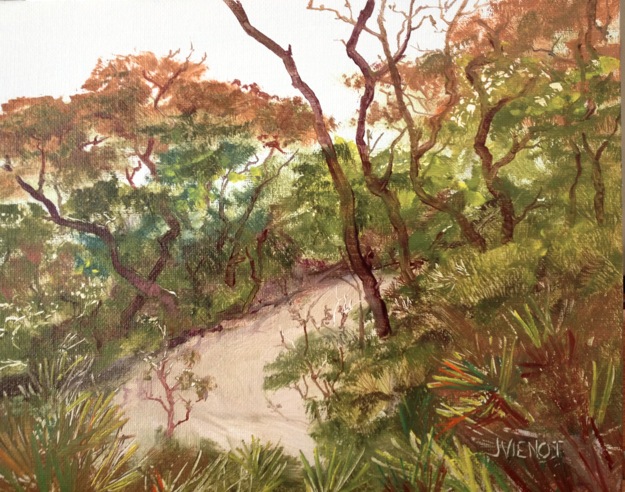
 I was privileged to paint plein air beside my artist friend
I was privileged to paint plein air beside my artist friend 

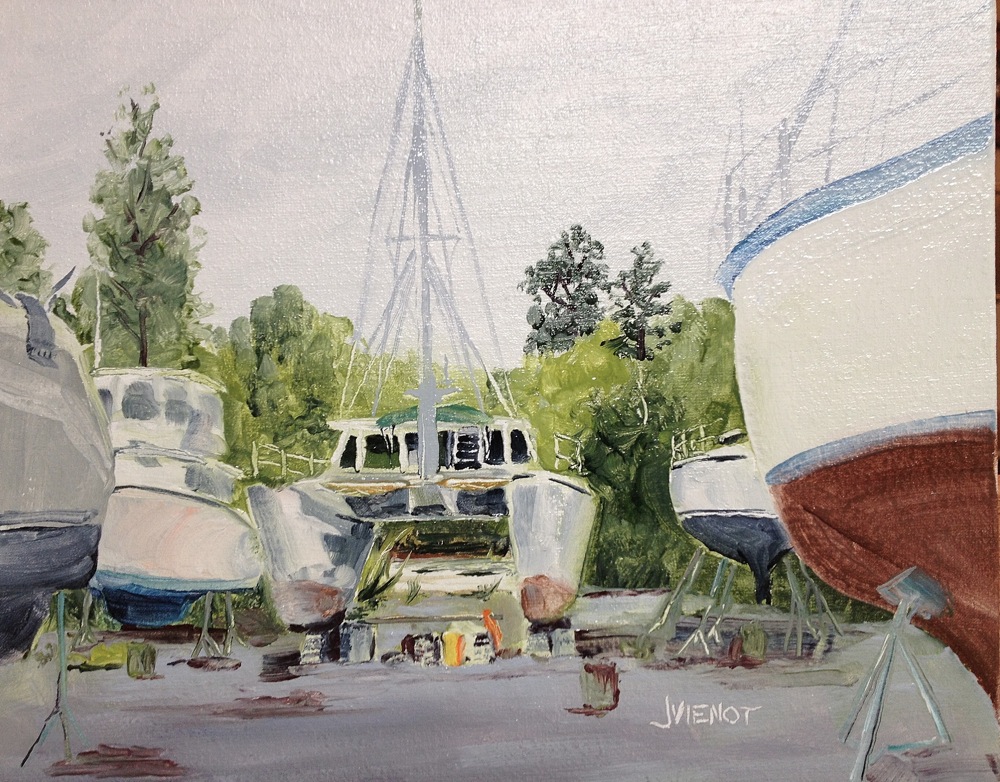

 I painted for 2½ hours before the chill crept up from my freezing wet feet into all of my bones. My painting was unfinished when I stopped, lacking the top of the tree line, the standards supporting the boats, and the catamaran’s mast wires. So I took a few shots with my iPhone to help me remember what the scene looked like, to finish it in my studio.
I painted for 2½ hours before the chill crept up from my freezing wet feet into all of my bones. My painting was unfinished when I stopped, lacking the top of the tree line, the standards supporting the boats, and the catamaran’s mast wires. So I took a few shots with my iPhone to help me remember what the scene looked like, to finish it in my studio.



 I am starting to see in color. That may sound strange, but the fact is that most of the time in my normal everyday activity, I hardly pay attention to color. When I was focusing on figure drawing, I occasionally used color, but for the most part I was focused on line, shape, and value, usually rendering the whole piece just using a black-white value scale. Now that I am painting again, I am noticing for example, when a white railing is picking up the blue of the sky, or how intense a green becomes when it is contrasted with red. I am finding that much of what I think I am seeing as different tones of a color are actually the same color which looks different depending on what color is next to it. I am particularly challenged by all the greens I see, when landscape painting. If I try to mix an exact shade of green, it often seems muddy compared to what I actually see. Who knew, that Einstein’s theory that everything is relative applies to painting as well as nuclear physics, that the better way to achieve a color is to find the color next to it which gives it the quality I want. Resisting the temptation to launch into that as a metaphor for life, I’ll instead move on to my adventures in plein air painting over the past week. Last week we painted at Nick’s Restaurant, and I bemoaned the fact that I know very little about boats. The next day I decided to take another run at the featured boat, using my photo references, and came up with the piece at top right. It was the little paprika-colored spots of rust washing out from the old nails in the hull, that gave the greens and turquoise the punch I wanted. So I wafted a little of that color into the foreground grasses too.
I am starting to see in color. That may sound strange, but the fact is that most of the time in my normal everyday activity, I hardly pay attention to color. When I was focusing on figure drawing, I occasionally used color, but for the most part I was focused on line, shape, and value, usually rendering the whole piece just using a black-white value scale. Now that I am painting again, I am noticing for example, when a white railing is picking up the blue of the sky, or how intense a green becomes when it is contrasted with red. I am finding that much of what I think I am seeing as different tones of a color are actually the same color which looks different depending on what color is next to it. I am particularly challenged by all the greens I see, when landscape painting. If I try to mix an exact shade of green, it often seems muddy compared to what I actually see. Who knew, that Einstein’s theory that everything is relative applies to painting as well as nuclear physics, that the better way to achieve a color is to find the color next to it which gives it the quality I want. Resisting the temptation to launch into that as a metaphor for life, I’ll instead move on to my adventures in plein air painting over the past week. Last week we painted at Nick’s Restaurant, and I bemoaned the fact that I know very little about boats. The next day I decided to take another run at the featured boat, using my photo references, and came up with the piece at top right. It was the little paprika-colored spots of rust washing out from the old nails in the hull, that gave the greens and turquoise the punch I wanted. So I wafted a little of that color into the foreground grasses too.
 This week is the largest of the spring-break tourist weeks in the beach resort communities of Panama City Beach, Seagrove Beach, and Destin, FL. So when the announcement came that the plein air painters would be meeting at the docks again in Destin, I knew the drive would take all the fun out of the adventure, so I opted to paint from my dock in my back yard. I had thought I would be painting my view of the creek leading into Tucker Bayou, but when I looked upstream, the color of the bayou grasses intrigued me. My initial 6″ x 6″ study, left, did nothing for me by way of planning my painting, but rather served more like a singer doing la-la-La-LA-La-la-la scales to warm up her voice before performing.
This week is the largest of the spring-break tourist weeks in the beach resort communities of Panama City Beach, Seagrove Beach, and Destin, FL. So when the announcement came that the plein air painters would be meeting at the docks again in Destin, I knew the drive would take all the fun out of the adventure, so I opted to paint from my dock in my back yard. I had thought I would be painting my view of the creek leading into Tucker Bayou, but when I looked upstream, the color of the bayou grasses intrigued me. My initial 6″ x 6″ study, left, did nothing for me by way of planning my painting, but rather served more like a singer doing la-la-La-LA-La-la-la scales to warm up her voice before performing.

